Table of Contents
Automotive lighting has come a long way from basic headlamps to sophisticated systems that enhance visibility, safety, and vehicle design. Whether you’re replacing a bulb or upgrading to more advanced lighting technology, understanding the main types of automotive lighting is essential for making informed choices. In this comprehensive guide, we’ll explore the different types of automotive lighting, their purposes, benefits, and key considerations for drivers.
1. Headlights
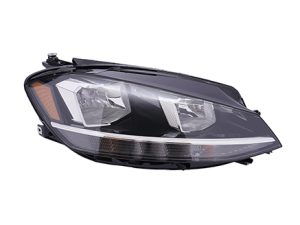
Headlights are perhaps the most important automotive lighting system, providing visibility for the driver and making the vehicle visible to others on the road. Headlights have evolved significantly, offering brighter, more efficient lighting options to improve road safety, especially at night.
Types of Headlights:
Halogen Headlights
-
- Description: Halogen bulbs are the traditional type of headlights that have been used in vehicles for decades. They work by passing electricity through a tungsten filament inside a glass bulb filled with halogen gas.
- Pros:
- Affordable
- Widely available
- Simple to replace
- Cons:
- Short lifespan
- Less energy-efficient compared to modern alternatives
- Produces more heat
Xenon (HID) Headlights
-
- Description: Xenon High-Intensity Discharge (HID) headlights use an electrical arc to produce light, which is much brighter and more efficient than halogen lights. They use xenon gas to generate a high-output beam.
- Pros:
- Brighter and more efficient
- Longer lifespan
- Cons:
- Expensive
- Requires a ballast for proper operation
- Can cause glare if misaligned
LED Headlights
-
- Description: LED (Light Emitting Diode) headlights use semiconductor materials to produce light. LEDs are more energy-efficient and last longer than halogen or xenon lights.
- Pros:
- Energy-efficient
- Longer lifespan
- Less heat generation
- Smaller, more compact design
- Cons:
- Expensive upfront cost
- Requires a cooling system for heat dissipation
Laser Headlights
-
- Description: Laser headlights use laser diodes to generate light, which is then converted into a bright beam by a phosphor lens. Laser headlights provide exceptional brightness and long-range visibility.
- Pros:
- Extremely bright and precise
- Long range, up to 600 meters
- Cons:
- Very expensive
- Not yet widely available in most vehicles
| Type of Headlight | Pros | Cons | Common Use |
|---|---|---|---|
| Halogen | Affordable, easily replaceable | Short lifespan, energy-inefficient | Standard vehicles, economy cars |
| Xenon (HID) | Brighter, longer-lasting | Expensive, needs ballast | Premium vehicles, luxury cars |
| LED | Energy-efficient, long lifespan | Expensive, cooling required | Modern vehicles, mid-range cars |
| Laser | Ultra-bright, long-range | High cost, limited availability | High-end luxury vehicles, concept cars |
2. Taillights
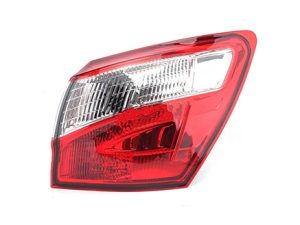
Taillights are essential for indicating the presence of a vehicle to other drivers, especially in low visibility conditions such as at night or in fog. They also help with signaling and braking.
Types of Taillights:
Incandescent Taillights
-
- Description: Incandescent taillights are the traditional type, using a filament inside a glass bulb to produce light.
- Pros:
- Inexpensive
- Simple to replace
- Cons:
- Energy-inefficient
- Short lifespan
LED Taillights
-
- Description: LED taillights use light-emitting diodes to produce a brighter, more energy-efficient light compared to incandescent bulbs.
- Pros:
- Long lifespan
- More energy-efficient
- Instant brightness
- Cons:
- Higher initial cost
OLED Taillights
-
- Description: OLED (Organic Light Emitting Diode) taillights offer a new level of design flexibility. These lights are thinner, can provide a uniform light, and can even be molded into unique shapes.
- Pros:
- Flexible, innovative design
- Even and soft light distribution
- Cons:
- Expensive
- Still emerging in the market
| Type of Taillight | Pros | Cons | Common Use |
|---|---|---|---|
| Incandescent | Inexpensive, easy to replace | Short lifespan, energy-inefficient | Older cars, budget vehicles |
| LED | Long lifespan, energy-efficient | Higher initial cost | Modern vehicles, mid-range cars |
| OLED | Innovative design, uniform light | Expensive, emerging technology | Luxury cars, concept vehicles |
3. Brake Lights
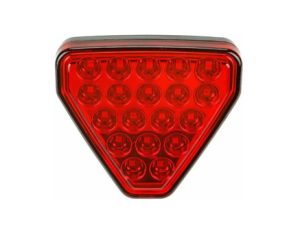
Brake lights are critical for signaling to other drivers when you’re slowing down or coming to a stop. Proper functioning of brake lights is crucial for road safety.
Types of Brake Lights:
Standard Incandescent Brake Lights
-
- Description: Traditional brake lights use incandescent bulbs, similar to standard taillights, that illuminate when the brake pedal is pressed.
- Pros:
- Low initial cost
- Easy to replace
- Cons:
- Not as bright as modern alternatives
- Shorter lifespan
LED Brake Lights
-
- Description: LED brake lights are brighter and more energy-efficient than incandescent bulbs. They light up instantly and provide superior visibility to other drivers.
- Pros:
- Instant brightness
- Longer lifespan
- Energy-efficient
- Cons:
- Higher initial cost
| Type of Brake Light | Pros | Cons | Common Use |
|---|---|---|---|
| Incandescent | Inexpensive, easy to replace | Short lifespan, less bright | Older vehicles, budget models |
| LED | Instant brightness, long lifespan | Higher upfront cost | Modern vehicles, mid-range cars |
4. Turn Signal Lights
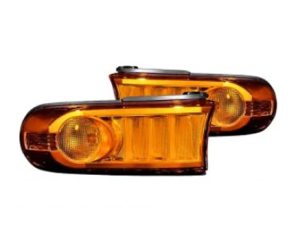
Turn signal lights, or indicators, are crucial for communicating a driver’s intent to other road users. While they serve a simple purpose, their visibility and effectiveness are essential.
Types of Turn Signal Lights:
Incandescent Turn Signals
-
- Description: Traditional turn signal lights that use incandescent bulbs to indicate turns.
- Pros:
- Inexpensive
- Easy to replace
- Cons:
- Less energy-efficient
- Short lifespan
LED Turn Signals
-
- Description: LED turn signals offer better energy efficiency and quicker response times.
- Pros:
- Faster response time
- More energy-efficient
- Longer lifespan
- Cons:
- More expensive than incandescent bulbs
Sequential Turn Signals
-
- Description: Sequential turn signals, often using LEDs, light up in a flowing pattern, which is both visually appealing and attention-grabbing.
- Pros:
- Unique, modern look
- Improved visibility
- Cons:
- Higher cost
- Requires specialized wiring
| Type of Turn Signal | Pros | Cons | Common Use |
|---|---|---|---|
| Incandescent | Inexpensive, easy to replace | Less energy-efficient, short lifespan | Older vehicles, budget models |
| LED | Energy-efficient, long lifespan | More expensive | Modern vehicles, mid-range cars |
| Sequential LEDs | Attention-grabbing, modern look | High cost, requires special wiring | Luxury vehicles, high-end models |
5. Fog Lights
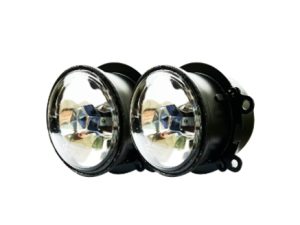
Fog lights are designed to cut through thick fog, rain, or snow to provide better visibility in adverse weather conditions.
Types of Fog Lights:
Halogen Fog Lights
-
- Description: The traditional fog light option, halogen fog lights are affordable and widely used.
- Pros:
- Affordable
- Easily available
- Cons:
- Not as bright as modern options
- Less energy-efficient
LED Fog Lights
-
- Description: LED fog lights are more energy-efficient and offer brighter, clearer illumination compared to halogen lights.
- Pros:
- Brighter
- More energy-efficient
- Longer lifespan
- Cons:
- Higher initial cost
| Type of Fog Light | Pros | Cons | Common Use |
|---|---|---|---|
| Halogen | Affordable, easy to replace | Less bright, less efficient | Budget cars, older vehicles |
| LED | Bright, energy-efficient | Higher initial cost | Modern vehicles, off-road vehicles |
For more information or to purchase high-quality automotive lighting solutions, Buy car lighting lamps online and explore a wide range of options for your vehicle.
Automotive lighting is essential not just for visibility but also for enhancing the safety and aesthetic appeal of your vehicle. Whether you’re looking to upgrade your headlights, add custom taillights, or improve the performance of your fog lights, understanding the different types of lighting systems available is key to choosing the best option for your needs.